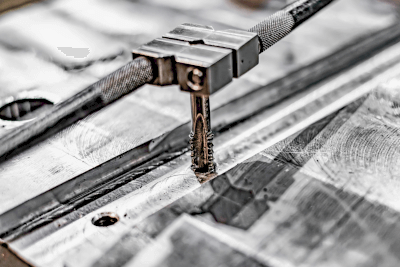What Is a Threading Service?

A threading service refer to the threading of screws used in various fields.
There are two types of threads: male threads (like bolts) and female threads (female threads with a groove cut on the inside of the nut).
The diameter and pitch of the screw specifications are determined by the standards that govern them.
There are two types of regulations, ISO metric threads and ISO inch threads.
Uses of Threading Services
Threading services are also used in various ways depending on the application.
Threads can be made of metal, as in the case of bolts and nuts, or of soft materials such as wood.
Wood screws used for wood do not require any threading process prior to screwing in the wood.
Screws used for precision instruments such as watches and clocks are called fine screws, which have a smaller pitch.
Types of Threading Services
Threading services use special tools called a die for male threads and a tap for female threads.
Threading services are performed manually by attaching a handle to a die or a tap.
In the case of machining, the die or tap is fixed to the chuck of a lathe, or a threading machine dedicated to ordinary cutting or threading services are used.
There are two types of threads, right-hand thread (clockwise) and left-hand thread (counterclockwise), depending on the direction of rotation for threading.
Furthermore, by changing the byte to be used, it is possible to handle trapezoidal screws, and by using a byte with a razor blade, it is also possible to cut off the corners of screws and burrs.
In addition, NC machining using an NC lathe allows the user to select a cutting method such as infeed. In addition, plastic processing called rolling and forging is also performed as thread processing that does not generate chips unlike normal cutting. Rolling is used as a processing that can reduce processing time.
Differences Between Cutting and Threading Services
Differences in Initial Investment Cost and Production Time
In the case of cutting, various shapes of threads can be manufactured by changing dies and taps using machine tools such as lathes, milling machines, and machining centers. In the case of rolling, the initial investment is high because it is necessary to prepare dies and taps that match the specifications and shape of the target product using a rolling machine. However, rolling has the advantage of shortening the processing time and increasing the durability of the tool. Based on these characteristics, cutting is suitable for processing small-lot, high-variety screws, while rolling is suitable for mass-producing screws.
Differences in Strength
Forged metal material has a metallurgical flow called fiber flow. Cutting cuts this fiber flow, resulting in a loss of screw strength. On the other hand, thread strength is not lost in the thread rolling process because fiber flow is not cut.
Difference in Chips
As the name implies, cutting produces chips because the material is cut. On the other hand, thread rolling does not produce chips because it deforms the material by applying pressure. Therefore, form rolling is more environmentally friendly and less wasteful than cutting.